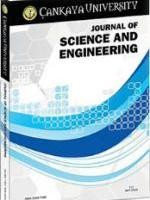Peter Ackroyd’s Chatterton: History as Taxidermy
Tarihselcilik, Biyografi, Post modern, Chatterton
Peter Ackroyd's Chatterton: History as Taxidermy
Historification, Biography, Postmodern, Chatterton,
___
- Ackroyd, Peter. Chatterton. New York: Grove Press,1987
- Baudrillard, Jean. “The Precession of Simulacra” The Norton Anthology of Theory and Criticism. (eds.) Vincent B. Leitch et al. USA : WW Norton Company, 2001.
- Eliot, T.S. “Philip Massinger” The Selected Prose of T.S. Eliot. (ed) Frank Kermode. USA: Harcourt Inc., 1975.
- Federman, Raymond. Critifiction: Postmodern Essays. Albany: State University of New York Press, 1993.
- Finney, Brian. “Postmodernist Play and Chatterton”. Twentieth Century Literature, Vol.38, No:2 (Summer 1992), pp.240-261. http://www.jstor.org/stable/441621 19.01.2009
- Hutcheon, Linda. A Poetics of Postmodernism: History, Theory, Fiction. New York: Routledge, 1988.
- Jenkins, Keith. “On the Necessary Conditions of Possibility for a Radical History” Culture And Power: The Plots of History in Performance.pp.41-55 (eds) R.V. Miyares& C.R. Gonzales. UK: Cambridge Scholars Publishing, 2008.
- Ricoeur. Paul. Time and Narrative. Vol. 1 Trans. Kathleen McLauglin & David Pellauer. USA: University of Chicago Press, 1990.
- White, Hayden. The Content of the Form. USA: The John Hopkins University Press, 1987.
- White, Hayden. Figural Realism USA: The John Hopkins University Press, 1999.
- Yayın Aralığı: Yılda 2 Sayı
- Başlangıç: 2009
- Yayıncı: Çankaya Üniversitesi
Bartoloméo de las Casas Yerlilerin Gözyaşları, Yerlilerin Yok Edilişinin Kısa Tarihi
Determination of Dependence Structure by Using Graphical Tools for Bivariate Continuous Data
Özlem Ege ORUÇ, Zeynep F. Eren DOĞU
Tess of the d’Urbervilles: the Tragedy of Godless Human Existence
Natural Background Radiation Measurements of a Base Station in Yalvaç County
Halim BÜYÜKUSLU, Abdullah KAPLAN, Gürcan YILDIRIM
Failed State Concept and the Sub-Saharan African Experience
